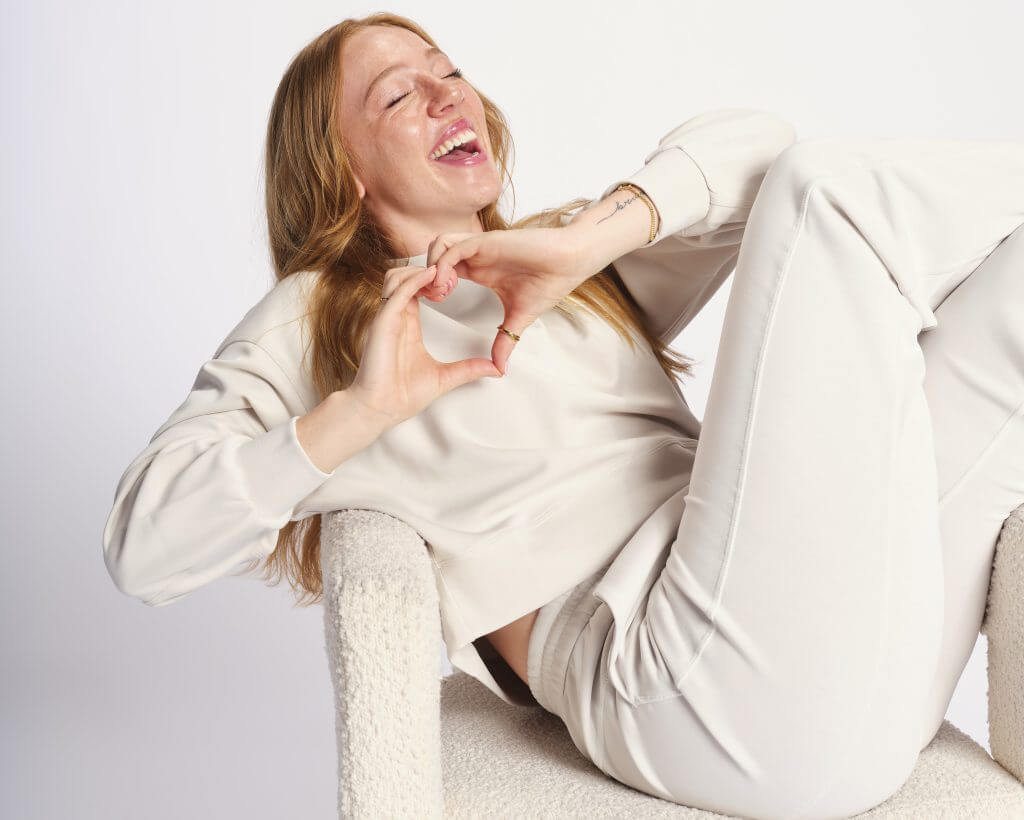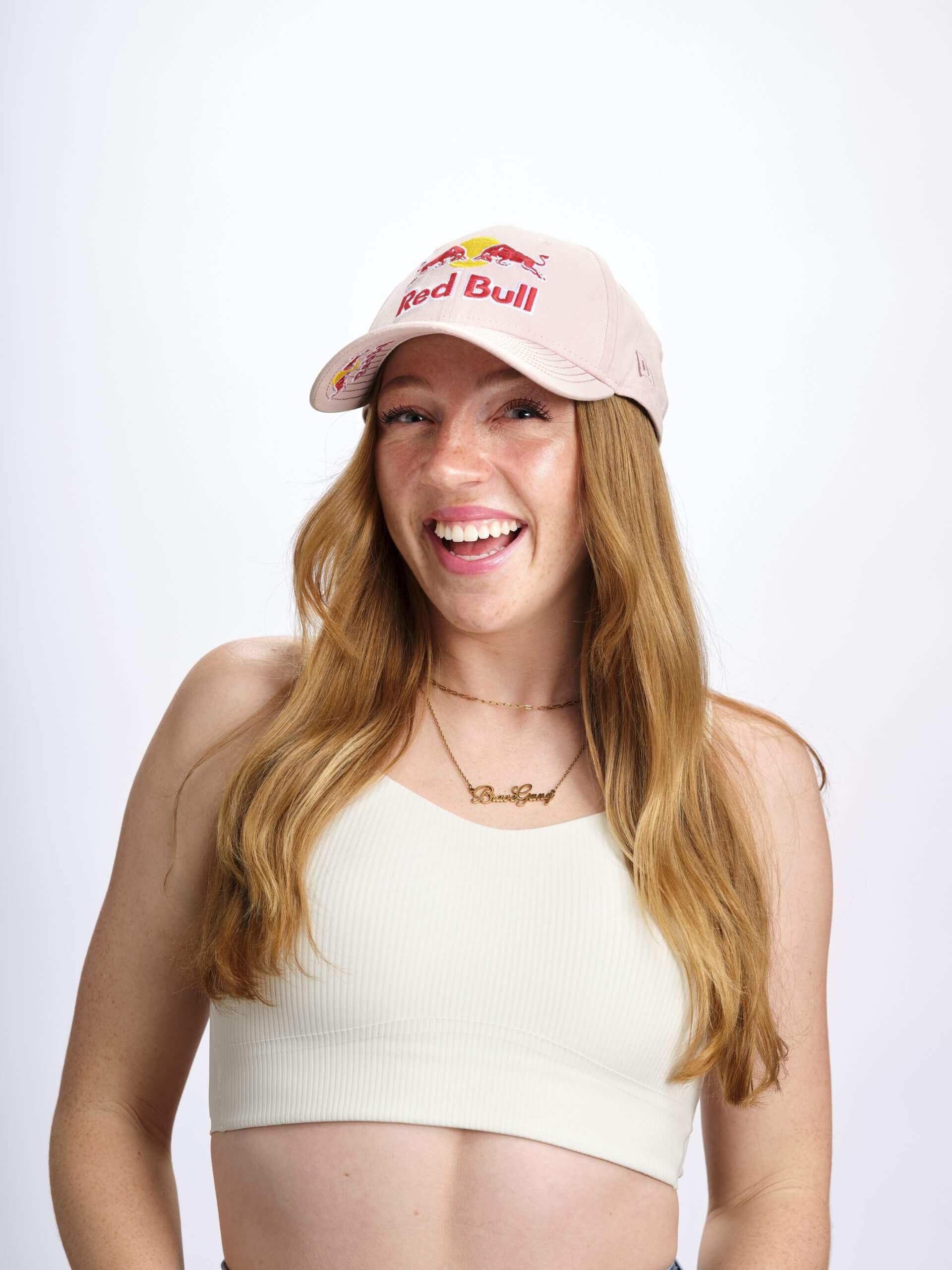Canadian Molly Carlson is Reaching New Heights, On Diving and Online Platforms

Canadian Molly Carlson is Reaching New Heights, On Diving and Online Platforms
The first time Molly Carlson watched one of her videos on TikTok go certifiably viral, the content of it surprised her.
It wasn’t a well-executed dive. It wasn’t a life milestone or a swimsuit haul that took off. It wasn’t a perfectly orchestrated and choreographed moment on her feed—the kind that she and so many of her peers stress endlessly to contrive.
Nope. It was, instead, Carlson peering over the high-dive platform at the Montreal Olympic Sports Centre, 20 meters up into the Quebecois atmosphere. She ended the video with a “just kidding, terrifying,” then called out the anxiety in her voice in the caption.
@mollycarlson Reply to @docbakes11 you can hear the anxiety in my voice 😂💀 #worthit #highdiving #diving #cliffdiving #fyp #montreal #olympicstadium ♬ original sound – Molly Carlson
“I had never shown me being stressed,” Carlson says now. “My whole life I’ve always shown that I’m so confident, I do perfect dives all the time. You know, social media—it’s a highlight reel. Everyone posts their best moments.
“So the first time I had shown that I was terrified and that went viral, that was the moment when I realized, ‘Oh my gosh, it’s so much cooler to be relatable than to be this perfect fake version of yourself.”
Millions of people have watched that version of Carlson—3.8 million following on TikTok as of July, plus another 400,000 on Instagram. It’s become common for a million people to watch Carlson discuss what a panic attack feels like or to explain that even elite athletes battle the self-consciousness that comes with bloating and cellulite.
Opening up about mental health
On Carlson’s first day at Florida State, she was determined to change everything about how she approached her sport.
The native of Fort Frances, Ontario, was something of a prodigy after transitioning from gymnastics to diving. She represented Canada at age 10 in the Pan Am Junior Games and dove at the 2014 Youth Olympics, an event where she finished last on 3-meter springboard (fodder for an early TikTok about combating perfectionism and promoting self-forgiveness).

Molly Carlson; Photo Courtesy: Godzpeed Agency
She fell shy in 2016 of a bid to qualify for the Olympics, finishing fifth on 3-meter at Canadian Trials. She would go on to a stellar career in Tallahassee as a three-time Most Outstanding Diver of the ACC Championships with six ACC medals, including 3-meter gold in 2020, platform gold in 2017 and the conference’s co-Scholar Athlete of the Year award in 2020.
But her athletic excellence exacted a psychological toll. She’d battled binge eating, body dysmorphia and anxiety through high school. Unwell as she felt, she had no injury to point to as proof, so she buried the emotions beneath layers of self-doubt.
She resolved to break the cycle. So before she got near a board at Florida State, she asked coach John Proctor for a sit-down. She couldn’t keep existing much less diving the way she felt, and she laid bare everything she was struggling with.
By the end of the week, the staff had set her up with a nutritionist and a psychologist. But even before the end of the conversation, Carlson knew she had a welcomed ear to confide in and an institutional environment that was going to support her as a person first.
“I said to John that I don’t want to go another 14 years of hating my life because of the way I look, because of my anxiety,” Carlson said. “I opened up that first day, and I said, ‘Listen, I have anxiety disorders, and I want to be able to dive and enjoy it, but I want to be able to talk about it, too.’
“And he told me right away, ‘That’s not my profession, but here’s exactly who you need to speak to (so you can) get the right resources.’ …
“Just the fact that a coach was willing to help my mental health was the biggest support I have ever felt. That was really all I needed to find the confidence.”
Carlson succeeded as a diver even when she felt awful by dint of sheer talent. But it’s not a coincidence that when she felt seen and accepted, when she didn’t have to expend energy to hide her pain, she flourished. Being passionate about the sport and striving to improve—instead of driving herself out of fear of failure—fueled grow.
“When I finally opened up about my mental health, I became the best diver I could be, and I was finally free to be myself and to be open about struggles,” she said. “It’s not easy to be a professional athlete in the first place. But adding anxiety disorders on top of that, I’m going to be struggling. So if I hadn’t opened up about that, I would probably be locked into those same negative thoughts as I was at 16.”
A Brave New World
Molly Carlson got her first exposure to high diving was what you might call logical. She saw videos around 2015 while still focused on traditional diving, and dismissed it as not her thing.
“I was like, ‘Oh, that’s crazy,’” Carlson said. “I would never do that. Let me stick to diving.”
The familiarity of Olympic diving, though, would eventually come to feel restrictive. Physically, Carlson had endured six wrist surgeries, damage accumulated over thousands of water entries. (High diving entries are exclusively feet-first.) When she polled her growing social following if she should try high diving, the answer was an overwhelmingly “Yes.”
Carlson’s answer on her first taste of it was about as unanimous.
“I loved it right away,” she said. “As soon as I switched over to my feet, I was like, I should have been doing this the entire time. It was like I finally found a home for myself in the sport and that this is exactly where I need to be.”
Carlson was done with traditional diving, but didn’t feel done with competition. Some of that was her new, healthy sense of striving. But it also had to do with the constraints of diving: The Olympics are limited to 3-meter springboard and 10-meter platform. Worlds incorporates 1-meter. The objective is to find five or six dives, drill them to rote perfection, and then try to execute them alongside a dozen or so competitors attempting the same handful of dives.
A decade in, the incremental improvements became stultifyingly slim. Carlson felt trapped by it.
Finding high diving was like discovering a new world. It was largely confined to oddity status—think Wide World of Sports in a sepia-toned Acapulco or the technicolor gonzo of Red Bulls stunts—until being added to Worlds in 2013, where Carlson competes in addition to a Red Bull-sponsored circuit. Carlson, who was seeing progress in her online advocacy for mental health in sports, found a chance to use that platform on behalf of the sport.
“It’s this brand new sport where it’s endless opportunity,” she said. “You can be such a good flipper, you can be such a good twister, you can be so good at a certain direction. And you can run with that. You don’t need to do identical dives as everyone in the field. So there’s really no room for comparison.”
Carlson may never get to an Olympics. Her sport may not get there until after her career is over. But neither of those possibilities matters in the day-to-day exercise of bravery that her career has become.
Once upon a time, Carlson would’ve tried to ignore that fear. Now, she excels by holding space for it. Brave and fearless aren’t the same thing. The latter pretends the fear doesn’t exist. The former holds the fear and then goes and chases her dreams anyway. It’s led to her creating a company named after the hashtag, #BraveGang, that she and her followers use to further spread the message.
It’s brought into stark relief for Carlson in some of her videos. A prime example is one in which she brings Olympic champion Tom Daley up to 18 meters and watches her childhood idol gawk in horror. It’s become a skill she has practiced as readily as pike position.
“You really need to be aware of your fear and not pretend like it doesn’t exist,” she said. “The more you pretend that fear, anxiety and stress don’t exist, then you’re kidding yourself. You’re not going to get as far as you need to go compared to someone who can truly recognize that it’s there and push through it. That’s true bravery.”



